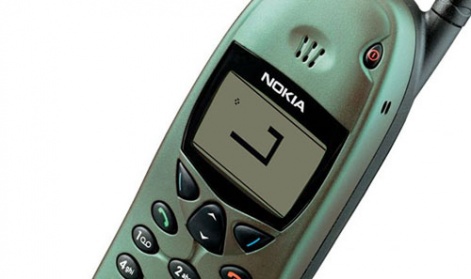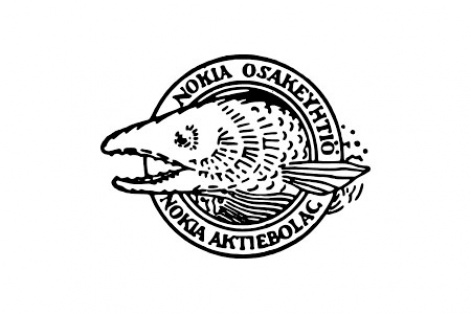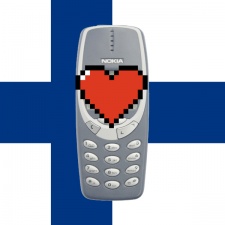In the build up to Pocket Gamer Connects Helsinki 2015 - which runs from 7-8 September 2015: get your tickets here - this week, we're looking back over the history of the Finnish mobile games industry.
You can read the full set here.
No creation story is worth its salt unless a snake is involved at some point.
It's certainly the case when looking at the history of mobile gaming as one particular reptile paved the way for a multi-billion dollar industry.
The launch of Snake on the Nokia 6110 in 1997 may have been low key at the time but it is undoubtedly the game which acted as the genesis of a now pervasive entertainment industry.
Pre-installed on 350 million phones by 2005, the simple yet captivating title became a global phenomenon that provide the first taste of how the mobile phone was going to become a revolutionary entertainment device.
Yet while it is the starting point for the emergence of a new global industry, it is perhaps more so a tale of how one small country firmly established itself as an unlikely market leader.
When exploring the rise of Snake to global prominence, the key question that has to be asked is how did a nation with a little over 5 million inhabitants become a hot bed for mobile gaming?

The answer lies in the patronage of one company and a series of seemingly unremarkable events; a chain that would lead to the emergence of a completely new gaming industry.
Early days
The 1980s and the 1990s are seen by most as the point when the gaming industry established itself as something both independent and relevant in a broader cultural context.
With the 1980s home brew gaming era paving the way for a spread of development talent across the world, the rise of mass market established consoles in the early 1990s helped gaming to grow up into a relevant form for many across the world.
How did a nation with a little over 5 million inhabitants become a hot bed for mobile gaming?
In Finland, the story for game developers barely diverged from this seemingly well-worn script. Developers in the 1980s initially started out by developing curious titles of their own, with the kind of manic streak seen in many of the homebrew games across the world.
Juho Kuorikoski, a historian of Finnish gaming as a whole, talks about one such game which demonstrated such oddness.
"The start of the Finnish market was in 1984, with the release of the first game solely published for the Finnish market. It was a very bizarre space shooter, every time you started the game you had to figure out what the buttons were - that was the core mechanic".
So like Hover Bovver or Chucky Egg in the UK, Finland had its own fair share of bonkers home brew madness to call its own. But as in other countries across the world, the industry grew up with the arrival of proper home consoles.
From the likes of the Commodore 64 to the Amiga, Finnish gaming grew up to the point that in the period between 1994-1996 to major gaming companies founded that would find a home on consoles.
Housemarque, creator of PS4 launch title Resogun, were one such company; the other studio was Remedy, known for the May Payne and Alan Wake console games.
Yet these companies played little role in the development of the mobile market.
While the likes of Housemarque and Remedy would help contribute to an overall increase in the cultural permeation and acceptability of gaming as a medium, they did little to create the foundations for the mobile gaming market.
That role fell into the hands of the company actually making the phones, Nokia, and it was one that they would carry out more capably than they could ever have foreseen.
The Nokia effect
At the same time that gaming began to enter the consciousness and bedrooms of Finns across the country in the 1980s, Nokia were far from being the mobile phone specialists that they became to be known for.
In fact, picking something that they would be solely defined by in the 1980s would be a rather tricky task.

In the manner of Japanese companies like Yamaha, Nokia were known for doing pretty much anything and everything to make money. They were known for making electronics like PCs and televisions but they also had stakes in the creation of rubber, footwear, chemicals and aluminium. They took roles in infrastructure, even owning a power plant.
But all of these businesses would be gone by 1996, a year prior to the release of the Nokia 6110, because of the emergence of the mobile business and the potential it had.
Snake was as the first mobile game to permeate the mass market. It was simple, addictive and perfectly suited to the constraints of the platform.
Mark Ollila, an ex-Nokia stalwart, told me about how Nokia's investment into mobile infrastructure changed the company.
"In 1982, Nokia introduced the first fully-digital local telephone exchange in Europe, and, in the same year, the world's first car phone for the Nordic Mobile Telephone analog standard" he said.
"The technological breakthrough of GSM [short for Global System of Communications], which made more efficient use of frequencies and had greater capacity in addition to high-quality sound, was followed by the European resolution in 1987 to adopt GSM as the European digital standard by July 1, 1991."
And it was a certain Finnish company that was one of the first on the scene.
"The first GSM call was made with a Nokia phone over the Nokia-built network of a Finnish operator called Radiolinja in 1991, and in the same year Nokia won contracts to supply GSM networks in other European countries" said Ollila.
It was this success the led Nokia down the path towards mobile dominance. Seeking to establish a position of global leadership within the sector, Nokia closed their other investments down to focus on this goal.
Slithering onto the scene
But even this wasn't a direct pre-cursor to the arrival of gaming on a phone handset. After all, entertainment hadn't been a part of Nokia's cavalcade of business options in the 1980s and it wasn't a part of their infrastructure goals following their decision to focus solely on mobile.
Instead, the arrival of mobile gaming was a happy accident caused by an engineer working for Nokia called Taneli Armanto and some extra space in a mobile OS.

According to Kuorikoski, this is what happened.
"Nokia were developing a new OS for their phones and there was a space in the OS that they thought they could fill with something interesting. So the Nokia Development Division started thinking up ideas and got their hands on a Hagenuk MT 2000 [a Danish smartphone released in 1994] which had a simple Tetris variant on it."
"So Nokia decided they should copy it on their product with their own game" Kuorikoski continued. "Taneli tried a number of different ideas before he saw this snake game that his cousin made for PC. And he realised that it was perfect for mobile."
That lead to Armanto working to bring it across to the handset.
Encouraged by Nokia management who wanted to see how the infrared functions of the 6110 handset could be exploited, he created the version of the game that would end up embedded on every handset that the company distributed for the best part of ten years.
Without Nokia, there would be no Snake. And, without Nokia the vibrant Finnish mobile gaming scene may never have existed.
Pausing perhaps to appreciate an early irony that the initial idea for successful mobile gaming was seemingly lifted from somewhere else, Armanto's decision to develop Snake acts was the first point where developments in gaming and the mobile infrastructure tied together.
The individual home development scene that saw Armanto's brother working on a personal project was suddenly brought into the fold of the development of a commercial strategy to dominate the world's mobile industry.
A phenomenon
And for Nokia, it was a surprisingly successful way of helping them achieve that goal because Snake became a phenomenon. It wasn't just played by people across the world; it became an obsession.
In Finland there were Snake competitions at regional and national level, in which players fought to become the dominant player.
And across the world, players who owned Nokia handsets sunk hours into both the original Snake and its successors Snake 2 and Snake 3, to the point that the Mobile Entertainment Forum rewarded Armanto with a special award in 2005 for his role in the creation of mobile gaming.
And it deserved that award completely for two distinct reasons.
The first was that it was the first definitively mobile game to permeate the mass market. It was simple, addictive and perfectly suited to the constraints of the platform - meaning that players across the world could begin to see their handset as more than just a device for making calls.
Second though, it established the early business model for mobile gaming that would go on to dominate the industry.
Snake's audience reach was unparalleled because it was distributed on the handsets of what would be the dominant player for the first fifteen years or so of the mobile industry.
The foundation
While it didn't make money from doing so, most early developers working in the industry focused on getting their games built into handsets in exchange for a small commission as one of the earliest viable mobile gaming models.
But beyond that, Snake is important in the history of mobile gaming in Finland because it shows the important role that Nokia played as a patron of the mobile gaming arts.
While it played its role somewhat unwittingly, the support for Armanto's game would help establish both Nokia as a cultural icon across the world and mobile gaming as an idea at least worth considering for both consumers and companies.
Without Nokia, there would be no Snake. And, as we will see in much of the rest of this history, without Nokia the diverse and vibrant Finnish mobile gaming scene we see today that dominates the world may never have existed.
Tomorrow, in the next part of our history of mobile gaming from a Finnish perspective, we look at Riot-E and how the idea of mobile gaming in the early 2000s was stronger than the execution.























